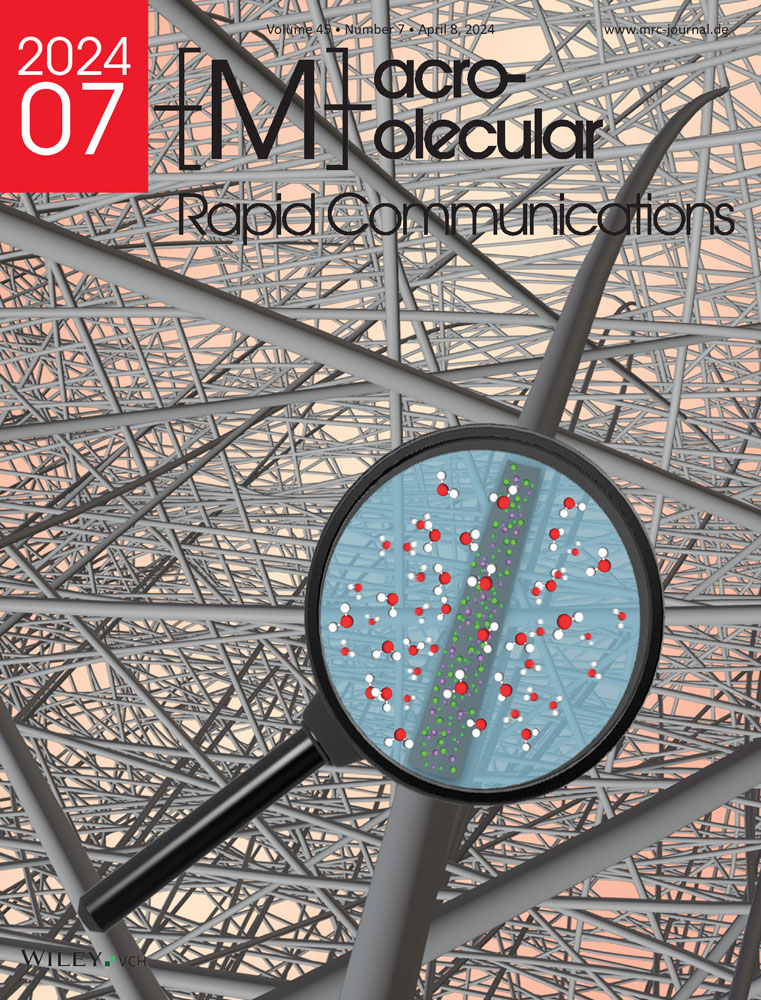Red-Shifted Luminescence of Acrylonitrile-Containing Copolymers: A Matter of One Methyl Unit
Abstract
Copolymerization provides an effective approach to tune the photophysical properties of non-conventional luminescent polymers (NCLPs). In this study, the controlling of intrinsic emissions of polyacrylonitrile (PAN) copolymers is revealed by a delicate difference of secondary monomers. The introduction of methacrylate comonomers can induce a 70-nm red-shifting in the PL emission of copolymers compared with that of acrylate-containing copolymers. The mechanism of such “copolymerization induced red-shifting” in PAN copolymers is investigated. It is demonstrated that the presence of the α-methyl group in the copolymers can enhance the chain rigidity and through-space conjugation (TSC) of C≡N groups, resulting in the red-shifting of emission.
Conflict of Interest
The authors declare no conflict of interest.
Open Research
Data Availability Statement
The data that support the findings of this study are available from the corresponding author upon reasonable request.




